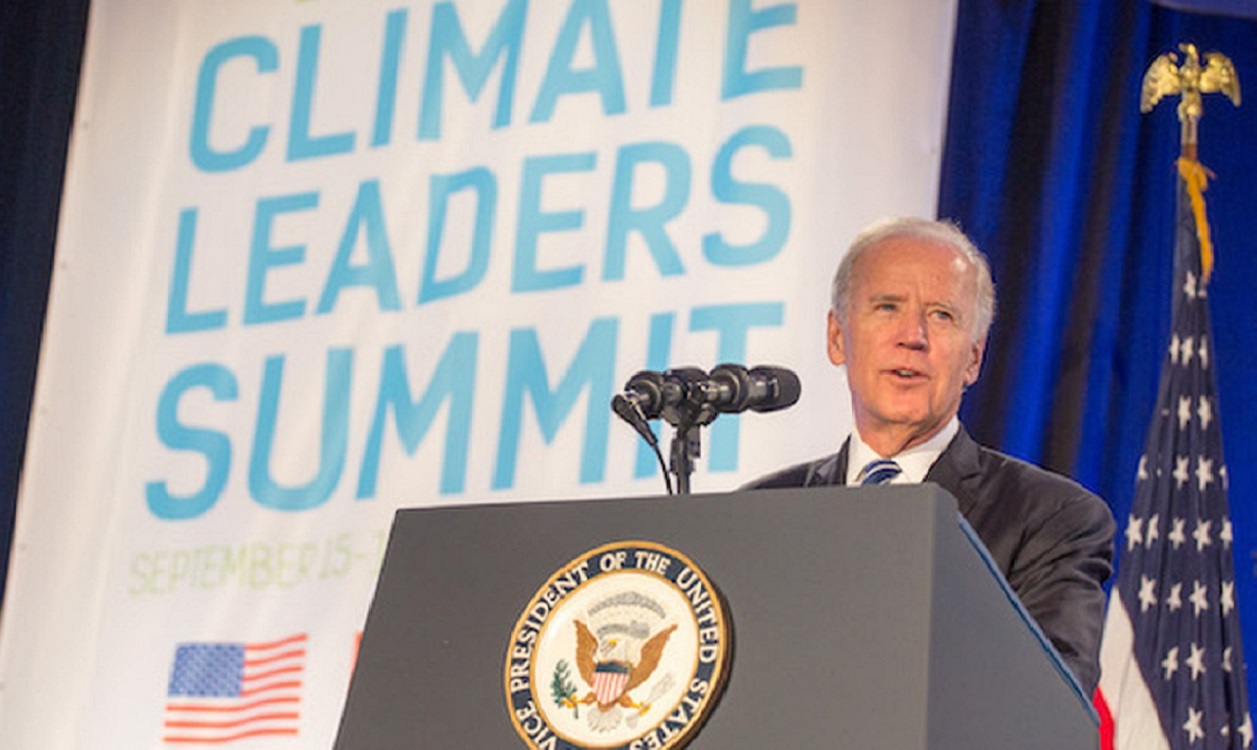The whole world will be watching the Biden administration this April. President Biden recommitted to the Paris Agreement on his first day in office, sending a strong signal that he intended to prioritize climate action during his term. But rejoining the agreement was just the first step. This month, the US will set a new nationally determined contribution —the amount we pledge to reduce our greenhouse gas emissions by 2030. Around the world, activists and allies alike are wondering whether the Biden administration will commit to reducing emissions at a scale and speed that reflects the urgency of the climate crisis.
As a Black woman living in Louisiana's Cancer Alley, it couldn't be clearer that it is past time to get as serious as possible about tackling the climate crisis within the narrow window we have to avert its worst impacts. I’ve experienced a series of devastating hurricanes made worse by climate change, and I know it’s imperative that we keep our waters from warming any further, which would spawn even more damaging storms. If we don’t change course, my own home could be underwater as soon as 20 years from now.
From my vantage point on the Gulf Coast, I also see the immense opportunity offered by a strong federal commitment to climate action. Transitioning away from fossil fuels would clean up the toxic air pollution in Cancer Alley, reducing rates of respiratory illness and cancers. It would begin to reverse the legacy of environmental racism in “sacrifice zones” like Cancer Alley, where residents are largely Black and Brown. Investing in clean energy jobs would create economic opportunity in a country coming out of a recession, including in communities where people have been asked to sacrifice their health to earn decent salaries for far too long.
From the Gulf Coast to East Africa, communities on the frontlines of the climate crisis are calling on the Biden administration to take bold steps to tackle the climate crisis this decade. To meet this moment, President Biden must set a goal of reducing emissions at least 50 percent below 2005 levels by 2030. That will not only help us get off the path toward catastrophic climate change, but also reestablish the US as part of the global community committed to ending the climate crisis after four years of sabotage from the Trump administration.
While necessarily ambitious, the goal of cutting carbon emissions at least 50 percent by 2030 is also achievable. That’s clear from models created by energy analysts at advocacy groups and think tanks. Beyond that, I know that it’s possible because I’ve seen that Sierra Club members and supporters are putting us on the path to a more just and sustainable future. Our organizing and advocacy has won emissions reductions that far outstripped experts’ predictions.
Consulting groups and government agencies predicted that at most 73 gigawatts of coal would retire between 2017 and 2030. Our advocacy has already helped retire or secure retirements for 115 gigawatts of coal, and it’s only 2021. Thanks to a thousands-strong coalition that rallied, gave public comment, spoke out in court, and knocked doors, we’ve outperformed their highest projections by 58 percent.
Advocates have pushed towns, cities, and states to commit to transitioning to 100 percent clean, renewable energy, which will cut emissions even further. Over 100 million people in 173 cities, 14 counties, 8 states, Washington, DC, and Puerto Rico now live in places committed to 100 percent clean energy. These clean energy commitments set the stage for the 100 percent clean energy standard announced in Biden’s American Jobs Plan last week.
The Sierra Club’s members, supporters, and many partners are working to cancel the climate crisis in other sectors, too. We’re working to make sure our buildings and vehicles are powered by clean energy, instead of dirty fossil fuels. We’re protecting our natural carbon sinks like forests and wetlands, which can draw carbon out of the atmosphere.
Sierra Club members and supporters poured thousands of hours into working for climate action in every major sector, and won real progress. Now, it’s time for the Biden administration to follow through on its promises to treat climate change like the existential crisis it is. Only by setting, and meeting, a goal of cutting carbon emissions at least by half by 2030 will the world have a fighting chance of averting the worst impacts of the climate crisis.
